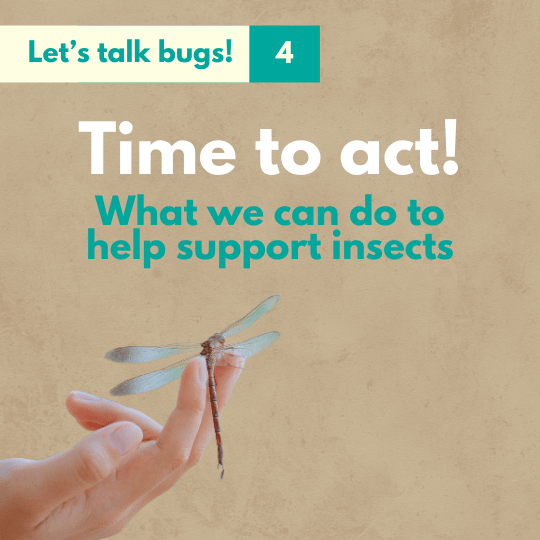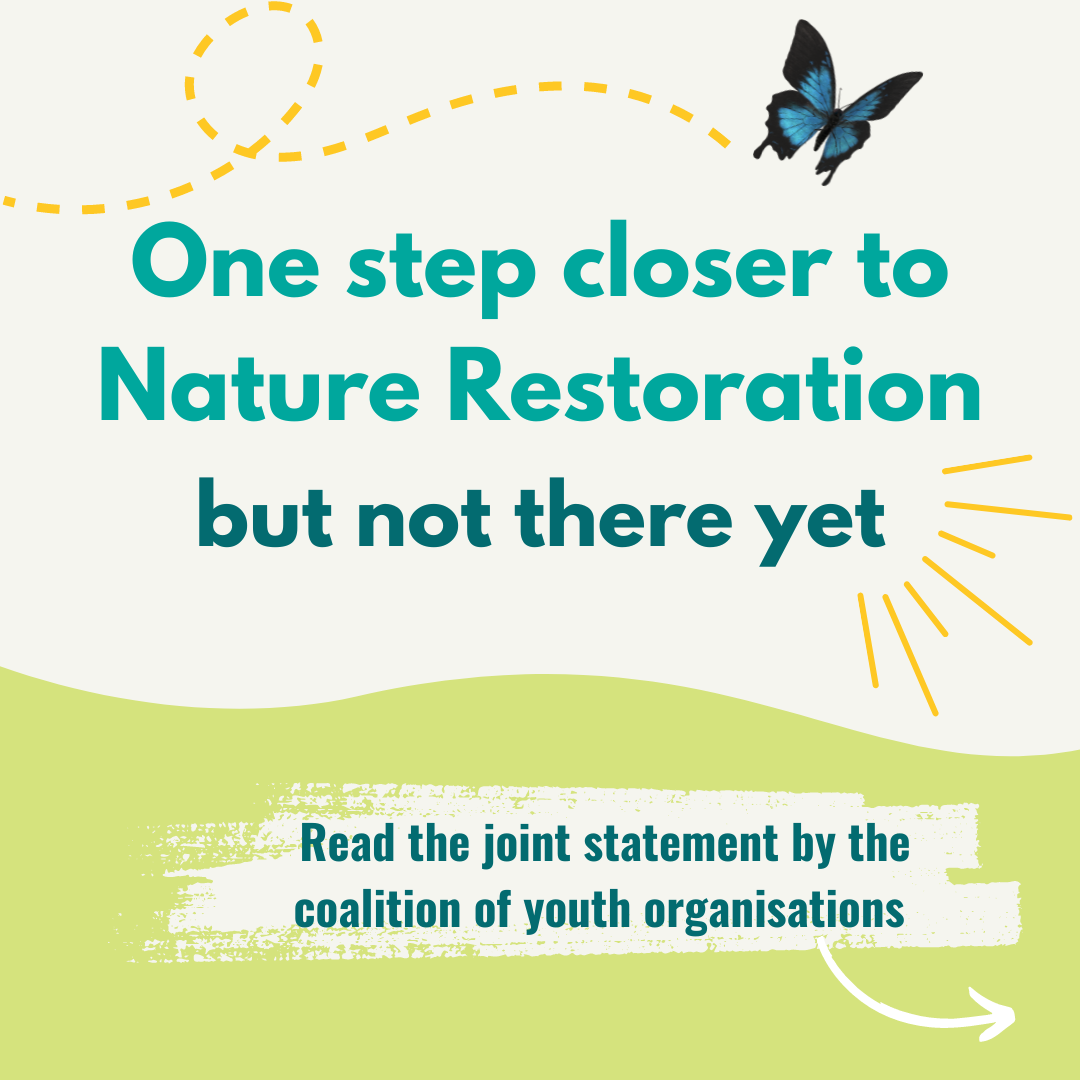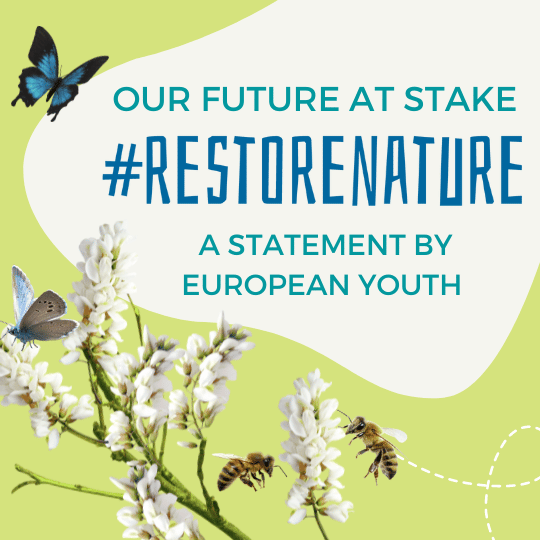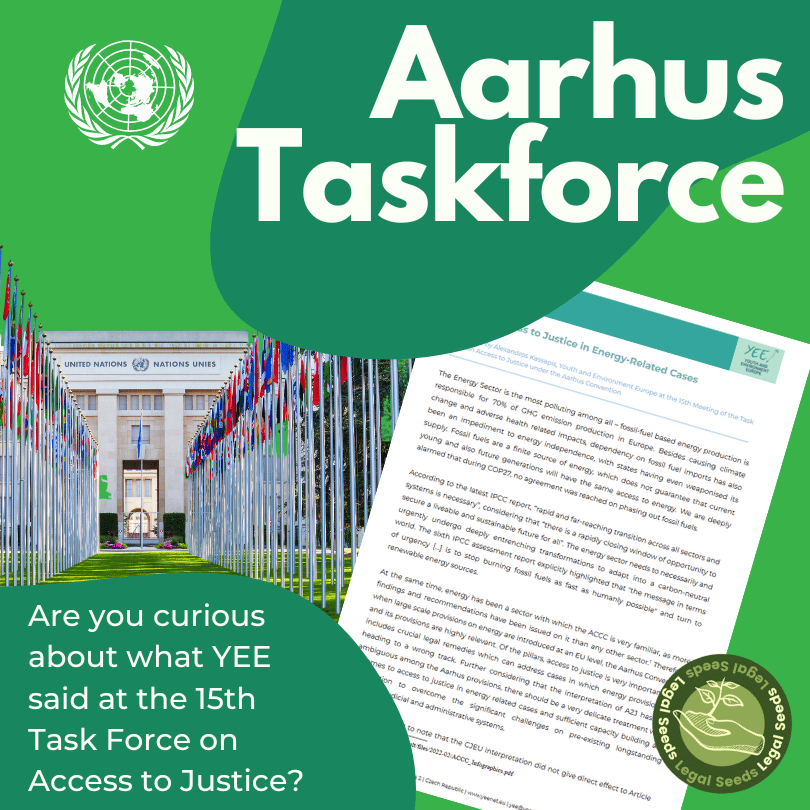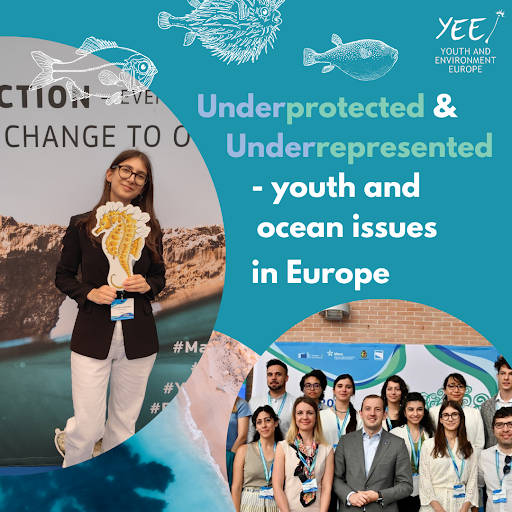

Emma Pagliarusco - Delegation Coordinator
As coordinator of the YEE delegation to COP29, I went to Baku with clear objectives: to push for ambitious climate commitments, center justice for vulnerable communities, and ensure youth, Indigenous voices, and civil society had a genuine seat at the table. Sadly, I leave disillusioned and deeply frustrated. The negotiations fell far short of the urgency demanded by the climate crisis, with weak agreements that lack ambition and justice. Among others, the NCQG agreement does not reflect the urgent need for a fair and just financial system to combat climate change, considering first of all the ridiculous amount agreed on by the Global North to be disbursed by 2035. The biggest challenge was navigating an oppressive environment, where civic space was tightly controlled, and critical voices — especially of environmental defenders — were glaringly absent. Moreover, the propaganda and performative leadership from Azerbaijan were deeply troubling, creating a dangerous facade that hid the exclusion of those most affected by the climate crisis. My immediate attention now is on the historic public hearings for the climate change advisory opinion at the International Court of Justice, taking place in The Hague these weeks. An Advisory Opinion from the Court can catalyse more ambitious climate action under the Paris Agreement by clarifying state responsibilities, integrating human rights and environmental law, and reinforcing the scientific consensus on climate change.

Stephanny Ulivieri
As Partnerships Lead for our delegation to COP29 and a Steering Committee member of the Children and Youth Pavilion, I went to Baku with defined objectives: to foster collaboration and our connection to civil society on the ground and to showcase the work done at YEE. Despite the enormous frustration with the negotiations, the unity and resilience within civil society stood out as a beacon of hope. For example, the Children and Youth Pavilion, where I contributed as part of the Steering Committee, was a vital space for connection and collaboration. It allowed grassroots organisations, youth leaders, and Indigenous representatives to share their stories and solutions, highlighting the transformative work being done on the ground - which contrasted with the slow negotiations being led in the meeting rooms. Additionally, our organisation’s participation in different side events showcased the Sustainaware and Eco-Anxiety projects, sparking important discussions about the human dimensions of climate change, such as eco-emotions and cross-sectoral collaboration and the role of young people in leading systemic change. COP29 may have fallen short in ambition, but it reaffirmed the importance of grassroots movements and partnerships. Moving forward, we will continue to build alliances, amplify marginalised voices, and push for systemic reforms in climate finance and policy. The challenges are immense, but the resilience of civil society reminded me that progress is possible when we stand united in our fight for climate justice.

Pegah Moulana
As the YEE delegate following the COP29 negotiation process and the climate finance agenda, I left Baku with a bittersweet feeling. Engaging in the negotiation processes was not just difficult—it was disheartening to witness how the voices of youth, civil society, and the most affected countries were systematically sidelined. Despite presenting clear, evidence-based demands and demonstrating the urgency of action, the response from developed nations, particularly the EU and other wealthy countries, fell painfully short. Our coalition of youth, civil society, and vulnerable nations stood united in demanding at least $1 trillion annually for the New Collective Quantified Goal (NCQG). This funding needed to be debt-free, accessible, and inclusive of provisions for loss and damage by acknowledging the irreparable harm already inflicted on communities by climate change. These were not extravagant demands but essential measures to ensure a just and effective response to climate change. However, none of these targets were realised. The EU and other developed countries refused to prioritise the needs of those bearing the brunt of the climate crisis, and the final decisions reflect a stark disregard for justice and equity. While we leave COP29 disappointed, we are not hopeless. We know the power of unity and resilience. Civil society will not be silenced. We will always advocate for what is right, whether they choose to listen or not. See you at COP30. The fight continues.

Francesc Almendros Viladerrams
As the External Relations Officer for YEE, I participated in COP29, focusing on strengthening partnerships and amplifying youth voices in global climate policy. During the first week, I served on the Steering Committee of the Children and Youth Pavilion, a vibrant platform where young advocates gathered to discuss critical topics like Just Transition, Renewable Energies, and Climate Justice. My mission was clear: to establish and reinforce partnerships that advance sustainable development and climate resilience. The pavilion was a hub for dialogue and action, hosting workshops and panels on pressing issues such as Climate Adaptation, Carbon Neutrality, and Biodiversity Conservation. I coordinated sessions on our projects like the Eco-anxiety, the Sustainaware within digital tools, and a networking session among European delegates, ensuring that youth-led solutions gained visibility and momentum. Engaging with key figures like the President of COP16 on Combat Desertification, UN Assistant Secretary-General Felipe Paullier, and the Vice Chair of the IPCC, I advocated for youth priorities, including Decarbonisation, Energy Efficiency, and Circular Economy strategies. These interactions strengthened our position as partners in achieving Net Zero Emissions and a Green Economy. Post-COP29, our immediate steps focus on transforming commitments into action. This includes advancing Climate Mitigation strategies, supporting a Clean Transition to renewable energy systems, and ensuring youth participation in developing climate-resilient policies. COP29 underscored the importance of integrating youth leadership into frameworks for Climate Justice and Climate Adaptation. Our primary objectives—amplifying youth voices, securing partnerships, and driving tangible outcomes—were achieved, laying the foundation for meaningful progress toward a sustainable and equitable future.
Learn more about our work on UNFCCC
Our delegation to COP29 has returned with a critical reflection. In this article, we share our insights on navigating the highs and
As European youth, we acknowledge our region’s historic responsibility for global emissions and call for urgent, just climate action. In solidarity with
European youth civil society represented by the Network of European Youth NGOs for Climate Action (NEYCA) sends this joint reaction to European
European youth civil society represented by the Network of European Youth NGOs for Climate Action (NEYCA) sends this collection of demands developed
Youth and Environment Europe (YEE) and Youth4Nature (Y4N) are international youth-led organisations within the nature-climate nexus that strive to bring the voices
There are many things that are wrong with COPs and which should be improved. However, we, the civil society, should not
Our delegation to COP29 has returned with a critical reflection. In this article, we share our insights on navigating the highs and lows of COP29, highlighting the challenges of amplifying youth voices, advocating for vulnerable communities, and pushing for a more just and equitable climate future. Read on for our full reflection and vision for the way forward.
As European youth, we acknowledge our region’s historic responsibility for global emissions and call for urgent, just climate action. In solidarity with young people worldwide, we demand equitable policies that uphold human rights and amplify youth voices, reflecting our duty to a sustainable, inclusive future.
COP29 Delegation reflection
https://yeenet.eu/wp-content/uploads/2024/02/position.png 250 250 Eva Kloudová https://yeenet.eu/wp-content/uploads/2018/11/logo-yee-728x1030.png Eva Kloudová2024-12-06 17:55:122024-12-06 17:59:19COP29 Delegation reflection
Green light to wolf hunting in Europe: youth, science and civil society go unheard.
As young people, we are beyond baffled to see that European countries support lowering the protection status of wolves in Europe, paving the way for increased wolf hunting in the 21st century. After almost a year since the Commission’s proposal to downgrade the wolf status in Europe, the final vote has been cast, flushing decades of conservation work, money and science down the drain. And, once again, it is us, young people, who will face the consequences of this unscientific and irresponsible decision.
On December 3rd, at the 44th Standing Committee Meeting of the Bern Convention in Strasbourg, the proposal to downlist the wolf was welcomed with a staggering 38 countries voting in favour. We must also acknowledge the following countries for opposing this proposal, voicing their concern regarding the evidence presented (or lack thereof), and noting the troubling precedent this decision sets: The United Kingdom, Bosnia & Herzegovina, Monaco, Albania and Montenegro. We urgently call upon these same countries to again voice their opposition before this decision comes into force in 3 months and for others to join them.
Fearmongering, hate and the spread of misinformation in Europe seem to have become common in narratives around conservation. Coexistence measures and modern technology, in which many young Europeans are now involved, are effective means of reducing human-wildlife conflict across the continent, and this is what European institutions should promote.
It is disconcerting how easily the European Union has ignored repeated calls to reason by citizens and scientists alike, in favour of political interests. Even today in Strasbourg, interventions made by multiple NGOs present as observers in the 44th Standing Committee Meeting went ignored (Pro Natura, Birdlife International, Born Free Foundation).
Full statement
The fact that wolves are now present in nearly all EU member states is in no small part thanks to conservation efforts and the legal protection provided by instruments like the Bern Convention. This proposal to lower the protection status of wolf populations can’t be justified based on current scientific evidence relating to the threats wolves still face. In addition, for wolves to effectively fulfil their ecological function, they must persist in ecologically sufficient numbers. Current data also indicates no notable increase in livestock damages or public safety risks caused by wolves since 2022. When a proposal to lower the protective status was brought to this committee.
The Swiss proposal in 2022 to downlist wolves I am referring to, was rejected by the Standing Committee, based on a report by the Large Carnivore Initiative for Europe (LCIE) highlighting the conservation status of European wolf populations at the time. The LCIE again released a statement on November 13th expressing their concern and highlighting what seems to be a cherry-picking of scientific evidence in the current proposal.
In justifying their decision to vote against the Swiss proposal the EU said the following, and I quote.
“Based on current data, lowering the protection status of all wolf populations is not justified from a scientific and conservation point of view. The conservation status of the species remains divergent across the continent, with a favourable conservation status assessment in only 18 out of 39 national parts of biogeographical regions in the Union. Continuing threats to the species, including emerging ones such as border fences and wolfdog hybridisation, also call for maintaining the strict protection status.”
This begs the question, what has changed 2 years since? The answer is virtually nothing. At least as far as the wolves are concerned. What has changed however is the political climate.
So, the European Union’s current decision to propose downlisting wolves appears inconsistent with its earlier stance. The same arguments that prompted the EU to oppose the Swiss proposal two years ago remain relevant today, raising concerns about the rationale behind the EU’s shift in position.
In light of ecological reasoning and prior political commitments, the proposed downlisting of wolves threatens to undermine the progress made in their conservation and sets a troubling precedent for future proposals for downgrading the protected status of other species in Appendix II. Given the fact that the convention does not set out specific science-based guidelines for such an action.
Downgrading the protective status of the wolf will make it easier to implement lethal control measures which are already being implemented with questionable reasoning. The science is clear on this, the decision to kill, legally or not, individuals of a protected species, such as wolves, risks diminishing their perceived value and undermining conservation efforts. As a young person from a country where most of my generation did not grow up with these amazing animals, this is not the right step toward coexistence with large carnivores, and nature as a whole, I want to see.
This move, which makes the wolves scapegoats and will not fix the struggles of rural areas finding it difficult to coexist with these animals, not only jeopardises the ecological functioning of European ecosystems but also sets a very dangerous precedent on how fragile European laws and democracy are in front of lobbying by few.
As European youth, we hold all relevant decision-makers accountable for this grave backsliding in European conservation law. We call for the return of scientific reason and intergenerational fairness on the decision-making table. We wish to see this decision not to be applied in EU law, and to be reversed as soon as possible.
Read the first youth position here.
Help us spread the word! Share this statement
Signatories




Statement on lowering the protection status of wolves
https://yeenet.eu/wp-content/uploads/2024/02/position.png 250 250 Eva Kloudová https://yeenet.eu/wp-content/uploads/2018/11/logo-yee-728x1030.png Eva Kloudová2024-12-04 11:57:002024-12-05 07:11:46Statement on lowering the protection status of wolvesCalling All Environmental & Climate Defenders in Europe!
Your voice is essential—let’s make it count.

Calling All Environmental & Climate Defenders in Europe!
Are you an environmental or climate defender in Europe, particularly involved in the youth movement? We want to hear from you!
We’re launching a major consultation to better understand the challenges, risks, and needs you face as a youth climate defender. Whether you’re dealing with legal barriers, threats, or simply in need of more resources – your experience matters.
Why get involved?
This consultation covers over 15 EU countries and aims to gather crucial insights that will:
- 〇 Shape clear policy recommendations for the EU.
- 〇 Inform strategies to support civil society and environmental defenders like you.
- 〇 Help us organise workshops and training based on your most urgent needs.
What’s the impact?
By sharing your input, you’ll contribute directly to improving support systems for defenders, especially those facing difficult situations. The consultation results will be used to design solutions, from advocacy efforts to practical support resources, ensuring your safety and ability to continue your work.
Your privacy is safe!
Filling in this survey is completely safe, and your responses will remain confidential. All of your data is encrypted and handled with care, ensuring your privacy is fully protected.
What happens next?
- 〇 We will map out the needs of defenders based on your responses.
- 〇 A detailed report will be published and shared with key EU stakeholders, including those involved in the Aarhus Convention.
- 〇 You’ll have access to workshops and materials that empower and equip you to overcome the challenges you face.
Take the survey now and help us build a stronger, safer movement for environmental and climate defenders across Europe.
Calling All Environmental & Climate Defenders in Europe!
https://yeenet.eu/wp-content/uploads/2024/10/Web-featured-image-news.png 500 500 YEE https://yeenet.eu/wp-content/uploads/2018/11/logo-yee-728x1030.png YEE2024-10-18 11:25:202024-10-18 11:53:23Calling All Environmental & Climate Defenders in Europe!
The declaration by the United Nations to consider this decade, the UN decade of ecosystem restoration, acknowledges decades of research urging us to take action to prevent further degradation of our natural world and restore what has been degraded. Although there is still a long way to go in achieving this goal, COP 16 must be a step towards finally taking action to restore ecosystems.
We recognise that biodiversity loss and ecosystem degradation disproportionately affect the most vulnerable communities, particularly those already marginalised by systemic inequalities, such as Indigenous Peoples, local communities, women, youth, people with disabilities, and those living in poverty. Biodiversity policies must therefore prioritise equity, social justice, and the inclusion of these groups in decision-making processes, as their unique knowledge and perspectives are critical for developing effective solutions.
As young people in Europe, we expect European countries at COP 16 of the Convention on Biological Diversity (CBD) to prioritise bold, actionable solutions that address the ongoing catastrophic global biodiversity loss and recognise our continent’s crucial role in addressing the crisis. We want concrete commitments to protect and restore ecosystems, ensure sustainable use of natural resources, and safeguard the rights of Indigenous communities. Our present and future depend on a healthy planet, and we expect nothing short of world leaders acting swiftly to implement the Global Biodiversity Framework, hold corporations accountable, and invest in nature-based solutions; all this underpinned by principles of solidarity and leaving none behind.
As for concrete text proposals, we support the policy paper by the Global Youth Biodiversity Network and the Opinion by the European Economic and Social Committee NAT/926 ‘A comprehensive strategy for biodiversity at COP16: bringing all sectors together for a common goal’. Still, as European Youth, we want to emphasise the following aspects:
We believe that COP16 decisions need to entail:
Inclusive and Equitable Biodiversity Strategies in NBSAPs
Global targets are translated into national implementation through the NBSAPs, which must be well-designed (i.e. whole-of-society and whole-of-government approach) and supported by a strong monitoring framework. However, the design of NBSAP should not delay biodiversity action: we have plenty of ready and proven solutions to tackle biodiversity loss that need to be accelerated. The European Union (EU) and its Member States should align their NBSAPs to the ambition of the EU Biodiversity Strategy, which, with its legislation like the Nature Restoration Law and the Deforestation Law, are already urging action.
As a region with high capabilities to do so, European countries should ambitiously support wildlife comeback and coexistence in their own continent, and have a duty to restore lost habitat and species populations besides protecting the few that are left.
When designing and implementing NBSAPs, we believe that the targets that differ most from former Aichi targets need to be especially considered, to make sure the NBSAPs address them properly. In particular, this includes Targets 22 and 23, which focus on critical areas of inclusivity. Target 22 emphasises the full and equitable participation of Indigenous Peoples, local communities, women, and youth while ensuring their rights to lands, territories, and resources are respected. Target 23 calls for gender equality and the empowerment of women and girls in biodiversity decision-making and leadership. We believe that these targets are essential to achieve a truly inclusive and effective biodiversity strategy.
Furthermore, NBSAPs must be developed with a focus on marginalised and vulnerable populations that are often left out of national environmental policies, ensuring their meaningful inclusion from planning to implementation. This includes securing their rights to ecosystems they depend on for their livelihoods and culture, while also protecting them from displacement and exploitation by large-scale projects under the guise of conservation.
Significant gaps remain in the indicators proposed by the Ad Hoc Technical Expert Group (AHTEG), particularly regarding youth involvement. EU countries can set a good example by including youth-specific indicators. This would be at the very least the disaggregation of indicators by age where relevant. However, EU countries are invited to adopt more ambitious indicators monitoring the key role of the youth and more stakeholders in achieving the CBD targets.
Finally, the EU should respect the principle of intergenerational equity prescribed by the GBF and include youth from an early stage of the process, as beneficiaries, partners and leaders,
Resource mobilisation & Financial Mechanisms
We urge the EU to be constructive and genuinely ambitious during the Resource Mobilisation and Financial Mechanisms discussion. These resources must come from different sources, including ODA, the domestic as well as the private sector, considering different capabilities and responsibilities, and applying the polluter-pays principle to ensure a fair share of burden distribution.
While significantly increasing biodiversity funding is essential, we caution against false solutions and greenwashing, which allow business as usual to continue without addressing the root causes of biodiversity loss.
We urge decision-makers to phase out investments dangerous to biodiversity and perverse incentives (such as environmentally harmful subsidies). We also want to emphasise that resources need to be redirected towards those working on the ground to achieve the Convention on Biological Diversity (CBD) goals – especially Indigenous Peoples, local communities, women, and youth. Any financial mechanism must explicitly ensure that a significant portion of the funds reach these communities directly, bypassing bureaucratic obstacles, and empowering them to lead restoration and conservation efforts themselves.
Ensuring equitable benefit-sharing with Indigenous Peoples and local communities is crucial, as these groups are often the custodians of biodiversity. COP16 should demand transparent, accessible pathways for these communities to gain their fair share of benefits from the use of genetic resources, ensuring that no group is left out or exploited.
Empathy and fairness in biodiversity policy
We call for empathy in biodiversity policy-making. Empathy means improving the lives of all beings —human and non-human— while minimising harm. By prioritising empathy as a value, we can foster stronger commitments for both our present and future. Furthermore, we urge the EU to integrate sufficiency; ensuring that resources are used in ways that meet essential needs without overexploitation, promoting sustainability and fairness for all species and ecosystems
COP16 must also strengthen the implementation of the Nagoya Protocol on Access and Benefit-Sharing (ABS) and ensure fair technology exchange, particularly in the area of digital sequence information (DSI) technologies.
Rio Convention Synergies
Biodiversity conservation, climate action and the fight against desertification, among others, should go hand in hand. We need the synergies on environmental action to be recognised and to be reflected in all three Rio Conventions. This also entails the recognition that actions for one Rio Convention might have negative impacts on the other ones, and should thus be avoided. The Rio Conventions should therefore design their implementation measures in such a way that it provides positive environmental effects without jeopardising the objectives of another convention.
European youth calls for action
We believe the COP16 represents a major opportunity to secure a sustainable and healthy future for future generations by exemplary actions at present. The future generations do not rightfully own the burden to deal with an even further deteriorated environment, loss of species and more severe climate change processes and events which today can be confronted.
This youth-led united position recalls the concerns surrounding the biodiversity loss crisis, the needs of the most vulnerable and the imperative need for proportional measures that correspond to the magnitude of the problem.
Help us spread the word! Share this statement
Signatories







Learn more about the Convention on Biological Diversity
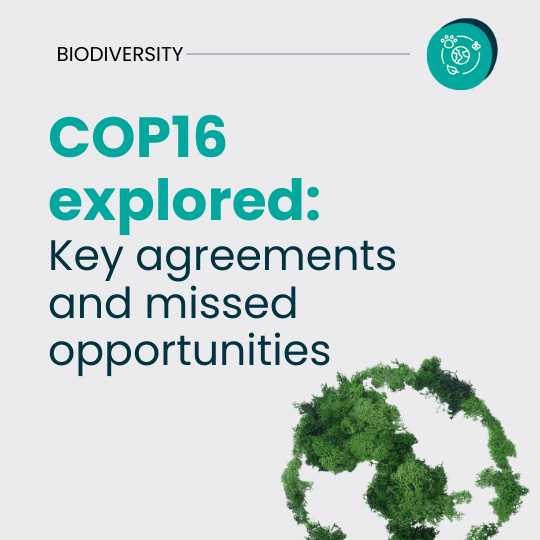
The conclusion of the 16th meeting of the Conference of Parties to the Convention on Biological Diversity (CBD COP16) marks a pivotal

As young people in Europe, we expect European countries at COP 16 of the Convention on Biological Diversity (CBD) to prioritise bold,
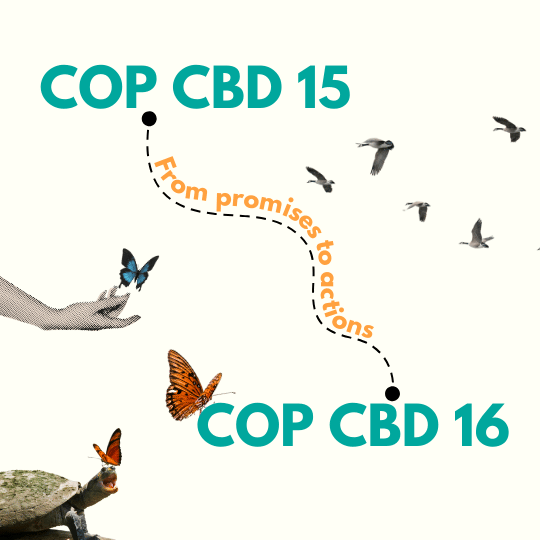
With the next conference of the parties to the convention on biological diversity (COP 16) right around the corner, let’s look back
European Youth statement ahead of COP 16
https://yeenet.eu/wp-content/uploads/2024/02/position.png 250 250 Eva Kloudová https://yeenet.eu/wp-content/uploads/2018/11/logo-yee-728x1030.png Eva Kloudová2024-10-17 15:19:182024-10-18 15:44:51European Youth statement ahead of COP 16
Written by

Ashton Melfor
Contents
Visual summary








Share this article
Looking back at COP 15
With the next conference of the parties to the convention on biological diversity (COP 16) right around the corner, let’s look back at what was achieved the last time around. The most important achievement of COP 15 was the adoption of the Kunming-Motreal Global Biodiversity Framework (GBF). After 4 years of negotiations, a post-2020 Global Biodiversity Framework was finally adopted. This new GBF follows a failure on behalf of the parties to achieve the targets set out in the previous decade. The new framework sets out 4 ambitious goals for halting biodiversity loss and the sustainable use of genetic resources. Transforming our relationship with nature and be nature positive by 2050.
Key Points of the GBF:
Goals for 2050: The framework sets out four long-term goals to achieve a vision of living in harmony with nature by 2050.
Targets for 2030: There are 23 specific targets to be achieved by 2030, focusing on conservation, sustainable use, and equitable sharing of benefits from biodiversity.
Global Vision: The overarching vision is to ensure that by 2050, biodiversity is valued, conserved, restored, and wisely used, maintaining ecosystem services, sustaining a healthy planet, and delivering benefits essential for all people.
To achieve these goals the framework sets out 23 targets. These global targets must be achieved by 2030. By far the most significant target is the so-called 30 by 30 which aims at restoring 30% of terrestrial and aquatic ecosystems by 2030. We discuss the outcomes of COP 15 and go more in depth on some of the targets in a previous article.
Broadly the targets can be divided into 3 key areas:
- Minimising risks to biodiversity.
- Addressing human needs through sustainable utilisation and equitable benefit-sharing.
- Strategies and solutions for implementation and integration.
What’s at stake COP 16
“A world living in harmony with nature by 2050”. That was the vision set forth by countries at COP 15. As the first COP being held after the adoption of the global biodiversity framework, COP 16 will serve as the first review moment for this framework. The parties to the convention are tasked with reviewing the protocol’s state of implementation, additionally, they must show that their National Biodiversity Strategies and Action Plans (NBSAPs – explained in the next section) are in alignment with the new targets and goals of the framework.
At COP 16, the parties will also enhance the monitoring framework and improve resource mobilisation for the Global Biodiversity Framework. Among other responsibilities, COP 16 is also expected to complete and implement the multilateral mechanism for the fair and equitable sharing of benefits derived from the use of digital sequence information on genetic resources.
What are National Biodiversity Strategies and Action Plans (NBSAPs)
National Biodiversity Strategies and Action Plans (NBSAPs) are essential tools for countries to plan how they will protect and use their biodiversity sustainably. According to Article 6 of the Convention on Biological Diversity, every country that is part of the convention must create these plans.
NBSAPs outline each country’s specific actions and strategies to meet the goals of the convention. They also show how these biodiversity plans are integrated into other national policies and sectors, ensuring a coordinated approach to biodiversity conservation.
So, NBSAPs will serve as the main tool for implementing the GBF at the national level, with parties monitoring and reviewing their progress towards achieving the GBF goals and targets through regular National Reports. These reports contribute to the Global Biodiversity Outlook, which periodically summarises the latest data on global biodiversity status and trends and analyses the global community’s efforts to conserve and sustainably use biodiversity. They are the keys to the goals to be achieved. Unlike the previous ones, goal D provides the technical and financial means necessary to achieve the other 3 goals.
Want to know what’s in your country’s NBSAPs including the European Biodiversity Strategy?
Take a look at the latest submissions.
Together, we can make a difference. Join us in sharing our vision for COP16 and ensure our voices are heard.
More articles about biodiversity
The Road from COP CBD 15 to COP CBD 16
https://yeenet.eu/wp-content/uploads/2024/09/COP-CBD-16.png 540 540 Eva Kloudová https://yeenet.eu/wp-content/uploads/2018/11/logo-yee-728x1030.png Eva Kloudová2024-09-30 16:53:172024-10-01 06:51:19The Road from COP CBD 15 to COP CBD 16Call for Applications: YEE Youth Scientific Advisory Board 2024/2025

7-10 h/ month
Volunteering
remote
1 year mandate
Start October 2024
Join the YEE Youth Scientific Advisory Board (YSAB)!
Youth and Environment Europe (YEE) is looking for dedicated individuals to join our Youth Scientific Advisory Board (YSAB). As a member, you will play a crucial role in supporting YEE’s projects, campaigns, advocacy actions, and training programs by providing essential and up-to-date information on selected environmental and climate topics.
This position is remote, and requires 7-10 hours of work per month on average. The membership of the scientific board will run for 1 year (with possible extension).
Application deadline: 18th September 2024
Your responsibilities
- ⚬ Provide scientific insights to ensure YEE’s actions, positions, and activities are aligned with the latest research.
- ⚬Support the drafting of position papers to ensure YEE’s advocacy is backed by independent, youth-centred sources
- ⚬ Contribute with data and resources for the development of handbooks, articles, and other educational materials.
- ⚬ Help build capacity and raise awareness among young people on pressing environmental and climate issues.
What we offer
- An opportunity to influence and shape youth-led environmental initiatives.
- A platform to share your expertise and collaborate with like-minded individuals.
- The chance to contribute to meaningful projects that place youth at the centre of environmental research and advocacy.
Candidates we are looking for
- Working proficiency in English.
- Eligible aplicants shall be based in one of the Council of Europe countries.
- Eligible applicants must be younger than 35 years of age.
- Be aligned with YEE's core values and mission.
- Individuals with a strong background in environmental science or related fields.
- Passionate about youth empowerment and environmental advocacy.
Expertise
Members shall be young students or young early career professionals with a background in hard science in one or more of the following fields:
- Renewable energy sources
- Energy systems/Energy sources
- Bioeconomy
- Geoengineering
- Sustainable forestry/forest management
- Biodiversity and Conservation
- Rewilding
- Nature Based Solutions
- Agriculture/Agroecology
- Sustainable Food Systems
- Pollution
- Water Pollution
- Air Pollution
- Chemicals, plastics and microplastics
- Waste management
- Freshwater systems
- Oceanography/Marine Biology/Marine Sciences
- Water resource management
- Climate science and Earth System Modeling
- Climate change impacts, adaptation and vulnerability
- Health and Climate
- Renewable energy sources
- Energy systems/Energy sources
- Bioeconomy
- Geoengineering
- Sustainable forestry/forest management
- Biodiversity and Conservation
- Rewilding
- Nature Based Solutions
- Agriculture/Agroecology
- Sustainable Food Systems
- Pollution
- Water Pollution
- Air Pollution
- Chemicals, plastics and microplastics
- Waste management
- Freshwater systems
- Oceanography/Marine Biology/Marine Sciences
- Water resource management
- Climate science and Earth System Modeling
- Climate change impacts, adaptation and vulnerability
- Health and Climate
Call for Applications: YEE Youth Scientific Advisory Board 2024/2025
https://yeenet.eu/wp-content/uploads/2024/02/hiring.png 250 250 YEE https://yeenet.eu/wp-content/uploads/2018/11/logo-yee-728x1030.png YEE2024-09-03 08:21:182024-10-01 06:52:24Call for Applications: YEE Youth Scientific Advisory Board 2024/2025
Investing in biodiversity protection is not just about preserving nature; it’s an investment in our future and economy. The EU has been funding nature conservation since the early 1980s, and in 1992, it launched its flagship funding program, LIFE.
Over the past 30 years, the LIFE program has co-financed numerous environmental and climate-related projects, improving the conservation status of 435 species and reducing greenhouse gas emissions. These projects have also contributed to public education, the expansion of the Natura 2000 network, and improved environmental governance.
The European Commission found that the LIFE program generated a tenfold return on the €3.46 billion invested from 2014 to 2020. In conclusion, investing in nature enhances social and economic prosperity for both current and future generations.
The coming months represent a key opportunity to address financing for biodiversity conservation and restoration measures across the European Union (EU). By 1 July 2025, the European Commission will release its proposal for the next Multiannual Financial Framework (MFF), officially kickstarting the period of negotiations between Member States and the European Parliament.
Effective and well-targeted financing is crucial for achieving EU biodiversity objectives, but significant funding gaps represent a serious impediment to successfully addressing biodiversity loss. The current financing needs from 2021 to 2030 were estimated at EUR 20 billion a year and changed to EUR 48.15 billion per year based on more recent calculations.
With the recent adoption of the Nature Restoration Law, it is crucial to support Member States in effectively implementing and enforcing its provisions. However, stricter financial regulations and efforts to reduce public debt raise the potential for intense debates regarding the allocation of resources within the EU, particularly concerning expenditures related to biodiversity.
Though focused on the post-2027 MFF, this paper also takes a broader perspective on biodiversity financing and considers the longer-term need to re-evaluate current approaches. The proposals are therefore designed to put biodiversity on a path to recovery beyond the next funding period to build a safer, healthier future for people and nature.
Help us spread the word! Share this statement
Learn more about our work on biodiversity

The conclusion of the 16th meeting of the Conference of Parties to the Convention on Biological Diversity (CBD COP16) marks a pivotal
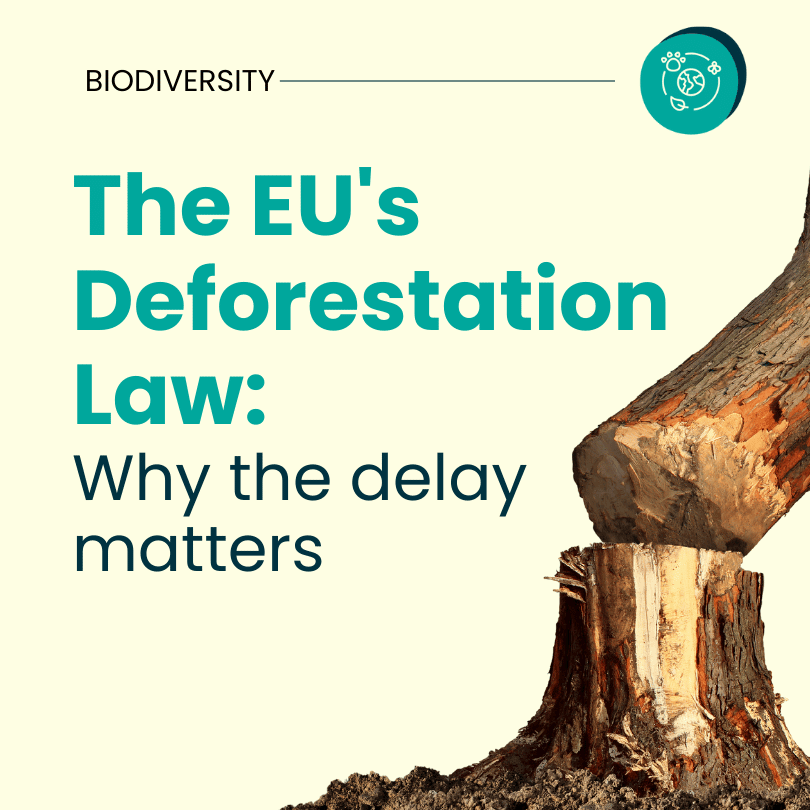
Despite the law’s importance in combating deforestation, the European Union recently announced a 12-month delay.
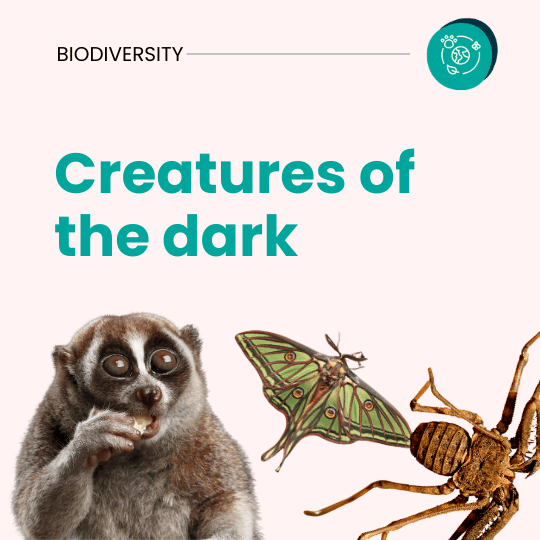
While nighttime activities are popular with humans for a few nights a year, some creatures keep it creepy all year round.

As young people in Europe, we expect European countries at COP 16 of the Convention on Biological Diversity (CBD) to prioritise bold,

With the next conference of the parties to the convention on biological diversity (COP 16) right around the corner, let’s look back

Put biodiversity on a path to recovery beyond the next funding period to build a safer, healthier future for people and nature.
How the next EU budget must deliver for biodiversity | Joint Statement
https://yeenet.eu/wp-content/uploads/2024/02/position.png 250 250 Eva Kloudová https://yeenet.eu/wp-content/uploads/2018/11/logo-yee-728x1030.png Eva Kloudová2024-08-21 11:26:202024-08-21 11:35:55How the next EU budget must deliver for biodiversity | Joint Statement
Last year, young activists from Fridays For Futre won Estonia’s first ever climate court case, where the state energy company Enefit was ordered to halt the construction of a new shale oil facility. Despite this, Enefit has been issued another construction permit, and the Estonian youth are going to court again. With this second lawsuit, Estonian climate activists are sending a clear message to Estonia and Europe: fossil fuels must be left in the ground, and youth will fight with all possible means.
Written by

Ronja Karvinen
Share this article
In October last year, Estonia’s supreme court ordered the state energy company Enefit to halt the construction of a shale oil facility. This ruling was the result of a case brought forward by a group of young Estonian climate activists, who in 2020 decided to take the municipality of Narva-Jõesuu to court for issuing a construction permit for the shale oil facility. The group of young people argued that the construction permit was given without adequately assessing its climate impacts and the commitments made under the Paris Agreement, as well as the European Union’s objective to achieve climate neutrality by 2050.
The court ruled that the municipality had assessed the climate impact well enough but not the environmental impact, and revoked the permit. For the first time in Estonia, the Supreme Court stated that the mitigation of climate change is a constitutional obligation.
This is one amongst several recent climate cases in Europe, where especially young people are taking their states to court, for inefficient climate action. In this case, it was Fridays for Future Estonia who stood behind the claim, eventually winning the court case. We have had the chance to speak with some of the young activists behind this case, to learn more about how climate litigation works and why it can be such a powerful tool for climate advocacy:
Last year you won Estonia’s first ever climate court case! What motivated you to use the legal system for your climate action?
We went to court because we ran out of other options and we were not willing to accept the government constructing a new fossil fuel plant amid the climate crisis. We had already presented public appeals, and organised peaceful weekly climate strikes, not to mention online advocacy. Suing the plant was our last option. As long as the rule of law holds, legal action is the only tactic that authorities and businesses can’t ignore.
How did you start the process? What do you need in order to file a climate court case?
First, it is essential to understand the stages of the oil plant’s completion, specifically the stage at which the operation of the plant can be impeded. The oil plant requires several permits, such as the construction permit and the integrated permit. Initially, we successfully contested the construction permit issued to the plant. This time, we are challenging the integrated permit which allows the plant to operate. Legal experts from the Estonian Environmental Law Center helped us find shortcomings in the permits and prepare arguments for both court cases. We submitted two complaints against the integrated permit: one as an environmental organisation under the name MTÜ Loodusvõlu, and another by a young activist in the movement, to protect her rights. Since this time the case also involved issues regarding human rights and children’s rights, we formed a team of multiple lawyers of various backgrounds to cover all necessary areas of legal expertise. The most crucial aspects of initiating a climate lawsuit are finding the right moment in the long chain of decisions to challenge legally, then finding lawyers who are willing to bring an innovative case, and securing funding to pay them.
This year you are filing new complaints to the court, why?
On May 27, 2024, the Environmental Board of Estonia issued an integrated permit to the aforementioned state-owned oil plant, allowing it to operate for the next 10 years. This is the same plant that we already successfully challenged in court once. By issuing the integrated permit, the Board rejected the arguments presented by us and other environmental organisations, urging them to refuse the permit. The plant will produce shale oil, a fossil fuel so polluting that it is not compliant with EU environmental regulations. That is why the oil is exported and used for fuelling long-distance ships, thereby contributing to the export of carbon emissions.
We based our complaints on the following arguments.
- Firstly, by granting the oil plant an integrated permit, the Environmental Board did not sufficiently consider the plant’s climate impact. The plant will increase Estonia’s current greenhouse gas emissions by about 6% and will take approximately 20% of Estonia`s carbon budget, which, in turn, makes it harder to reach our climate goals. Additionally, the measures to mitigate the climate impact are inadequate and largely based on underdeveloped technologies, such as carbon capture.
- Secondly, by granting the complex permit, the harmful effects of the oil shale mining required for the plant’s operation on the natural environment were not taken into account. Groundwater layers and wetlands, including Natura 2000 areas, which are already degraded due to mining, would be damaged.
- Thirdly, there is no overriding public interest in operating the oil plant. It does not create a significant number of jobs, is not highly profitable, and does not ensure our energy security to the extent that we should collectively endure the environmental damage it causes.
- Fourthly, the oil plant exacerbates climate change, which has dangerous consequences for people’s health, including children’s. For many people suffering from chronic diseases, the impacts of climate change are more serious than usual. For example, heatwaves, which have already become more frequent due to climate change, hinder adequate sleep and increase the likelihood of dangerous epileptic seizures.
What is your goal with the new court case?
We hope to revoke the integrated permit for the plant to stop the shale oil plant once and for all. This way we can push Estonia towards a climate-neutral economy and industry. We are trying to show to all fossil fuel enterprises that hope to burn the last of Estonia’s oil shale for rapid profit, that it is not going to be easy for them.
What would be your advice to a group of young people wanting to start something similar? What is the first thing to start with?
The first piece of advice would be to not be afraid. Turning to court, especially against a powerful actor like a large corporation or even the government can feel very intimidating. However, even the youngest and most vulnerable people have the right to a healthy environment, including a safe climate, that states and businesses must respect. The second piece of advice would be to build a team so that you are never quite alone. We have greatly benefitted from working together with legal experts, environmental NGOs, and volunteers, who have all helped us with different skills and support.
How can other young people or youth organisations support your new court case?
You can help us by sharing our messages––international pressure could be an impactful way of pressuring the government to stop the plant. Our main court battles lie still ahead. These may last for several years and are going to be costly. We would very much appreciate if you could donate to help us cover the costs of the case: https://fridaysforfuture.ee/en/what-can-you-do/#donate
More from environmental law
Going to court, again!
https://yeenet.eu/wp-content/uploads/2024/07/Going-to-court-again.png 540 540 YEE https://yeenet.eu/wp-content/uploads/2018/11/logo-yee-728x1030.png YEE2024-07-30 12:13:582024-07-30 12:25:15Going to court, again!
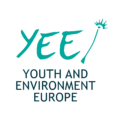
Ending Bottom Trawling: A Call for Real Protection of the Marine Environment
What is bottom trawling and why is it problematic
Bottom trawling is one of the most destructive fishing methods used worldwide, with as much as 40% of sea life being removed during a single trawling pass. The large weighted nets being dragged across the ocean floor are responsible for vast amounts of by-catch, discards and collapse of fish stocks.
Despite the restriction of human activities to conserve their rich biodiversity, Marine Protected Areas (MPAs) suffer greatly from the effects of bottom trawling. Even with its devastating and irreversible consequences, bottom trawling is still allowed in 90 percent of all offshore EU MPAs.
The impact of bottom trawling on marine ecosystems
Bottom trawling is responsible for reducing the complexity, productivity, and biodiversity of seafloor habitats, with sponges and corals facing the highest impacts. Unfortunately, most affected ecosystems are unable to recover from the damage they endure. For the few that do manage to recover, the estimated recovery time is estimated to be between 7.5 and 15 years.
The impact of bottom trawling on climate change
Bottom trawling not only causes significant harm to marine life, but according to a recent study, it also contributes up to 370 million metric tons of carbon dioxide to the atmosphere annually. The same study discovered that within an average of years, between 55 and 60 percent of emissions from underwater bottom trawling are released into the atmosphere, while the remaining CO2 can lead to more acidic conditions in the areas where it has been released, thus clearly contributing to the greenhouse effect and global warming of our planet.
The EU’s position on bottom trawling
Currently, there only exists an EU-wide ban on bottom trawling at depths greater than 800 metres, however the EU aims to extend a bottom trawling ban to all its MPAs by 2030, urging its Member States to draw up national roadmaps towards a bottom trawling plan as part of the 2023 Marine Action Plan (find our article about the EU’s Marine Action Plan here).
At the moment, Greece and Sweden are the only EU Member States to have announced a ban on bottom trawling in all their national marine parks and protected areas, with Sweden extending the ban to all its territorial waters (up to 12 nautical miles from the shore). This marks a significant step forward for these countries in the protection of marine biodiversity.
In contrast, the majority of EU countries have missed this year’s March deadline to outline national roadmaps for phasing out bottom trawling. The EU’s national governments need to demonstrate greater ambition for marine protection and commit to the Marine Action Plan and the EU Biodiversity Strategy 2030.
Protecting 30% of its marine areas by 2030 is incompatible with the highly damaging practice of bottom trawling, therefore the European Commission must take further action to ensure compliance with the existing legislation in countries that still permit bottom trawling inside the MPAs of their territorial waters.
YEE and GYBN calls for a ban of bottom trawling in Marine Protected Areas
As representatives of young people committed to environmental protection, Youth and Environment Europe and Global Youth Biodiversity Network Europe strongly advocate for the conservation of marine ecosystems and the promotion of sustainable fishing practices. Our position on the issue of bottom trawling comprises the following:
- YEE and GBYN Europe firmly oppose bottom trawling in Marine Protected Areas. This fishing method is highly destructive to seafloor ecosystems, causing irreversible damage to habitats such as coral reefs and seagrass beds. To achieve the 30×30 goal of protecting 30% of European waters by 2030, MPAs must offer genuine protection, which is incompatible with the destructive nature of bottom trawling. The practice of bottom trawling also needs to be reviewed in cases where it takes place close to MPA boundaries, in sensitive habitats such as spawning grounds, and in coastal waters.
- We show our strong support for ongoing initiatives by NGOs and civil society groups that advocate against bottom trawling. Notable examples include the joint campaign led by Oceana, Seas at Risk, Sciaena, and the Irish Wildlife Trust, as well as awareness raising and lobbying by WWF, Blue Ventures, the Blue Marine Foundation, Client Earth, and others. These organisations play a crucial role in raising awareness and driving policy changes.
Bottom trawling is a destructive practice that poses a significant threat to marine ecosystems and biodiversity.
As YEE and GYBN Europe, we urge EU Member States to prioritise ocean conservation and take decisive action. We firmly believe that young people, as the voice of the future, hold the power to enact the change they envision. With the recent EU elections, it is crucial for youth to push the newly elected MEPs to take action towards the protection of our oceans. Advocacy for stronger regulations, such as those in the Marine Action Plan, is essential to safeguard marine ecosystems. Join advocacy campaigns, engage with environmental organisations and use your voice to demand the preservation of our seas.
Help us spread the word! Share this statement
Learn more about marine conservation
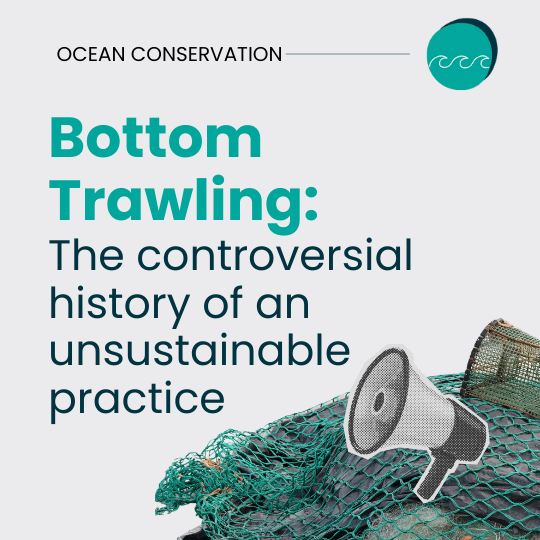
Bottom trawling involves dragging a weighted net or a rigid frame along the ocean floor. Despite its economic advantages, bottom trawling is

Youth and Environment Europe and Global Youth Biodiversity Network (GYBN) Europe Advocate for a Complete Ban on Bottom Trawling in Marine Protected

YEE Calls for Ambitious National Roadmaps for EU Marine Action Plan Implementation, including a ban on bottom trawling in MPAs

Bottom trawling involves dragging a weighted net or a rigid frame along the ocean floor. Despite its economic advantages, bottom trawling is contentious due to its considerable environmental and ecological impacts.

Youth and Environment Europe and Global Youth Biodiversity Network (GYBN) Europe Advocate for a Complete Ban on Bottom Trawling in Marine Protected Areas
Ending Bottom Trawling: A Call for Real Protection of the Marine Environment
https://yeenet.eu/wp-content/uploads/2024/02/position.png 250 250 YEE https://yeenet.eu/wp-content/uploads/2018/11/logo-yee-728x1030.png YEE2024-06-28 14:28:572024-06-28 16:42:42Ending Bottom Trawling: A Call for Real Protection of the Marine Environment
18 h/ week
12 EUR/hour
remote
1 year contract
Start 1st August 2024
YEE is seeking a Communications and Campaigns Coordinator
YEE is looking for a part-time Communications and Campaigns Coordinator, to work with the organisation’s advocacy portfolios. The work will be mainly centred on the deliverables of the Environmental Law Portfolio.
The Communications and Campaigns Officer will be responsible for creating content for the organisation’s social media platforms and the website, for developing communication strategies and campaigns, and for helping the advocacy projects produce various visual content such as infographics and designs for articles/booklets.
This position is remote, and requires 18 hours of work per week, with a gross salary of 12 EUR/hour. The position will run from 01/08/2024 to 31/07/2025 (with possible extension upon funding).
Application deadline: 10th July 2024
Your responsibilities
- ⚬ Create and produce informational content about events, resources and activities of the different advocacy portfolios
- ⚬ Consistently create social media content for Instagram, LinkedIn, Facebook, Twitter and TikTok
- ⚬ Proof-read and publish articles and handbooks on topics related to the projects
- ⚬ Work closely with the Communications team to develop communications material
- ⚬ Create and design infographics nd visual designs to support policy briefs and handbooks
- ⚬ Participate in weekly department-, project- and staff meetings
- ⚬ Support the Advocacy Working Group’s campaigns and projects by helping with articles, creating social media posts and advising on communication strategies
- ⚬ Update the visual identity and communications strategy for the Environmental Law project
- ⚬ Filming and producing reels, short videos and TikToks related to topics of Environmental Law
- ⚬ Recruiting and collaborating with influencers to create content
- ⚬ Producing social media content related to Environmental Law and Climate Litigation
- ⚬ Working on communications material for the Climate Law Hub (which YEE is a founder of)
- ⚬ Assist the YEE team in conducting the communications deliverables assigned to YEE for our communications contributions to the BeLIFE consortium
Candidates we are looking for
- ⚬ Working proficiency in English
- ⚬ Be based in Europe for the whole time of the contract
- ⚬ Eligible applicants must be younger than 35 years of age
- ⚬ Be aligned with YEE’s core values and mission
- ⚬ Has a background in or is active with environmental activism
- ⚬ Has a good eye for visuals, and is eager to create creative visual solutions for communications
- ⚬ Has previous experience with creating social media content, including reels/videos in the context of environmental activism, or in the context of youth mobilisation through social media
- ⚬ Has a good understanding of EU environmental policy and law
- ⚬ Has a good understanding and ability to read information regarding EU governing bodies and policies/laws
- ⚬ Is familiar with an international working environment, but is also comfortable working in a smaller team
- ⚬ Is creative and innovative, comes up with new ideas and suggestions for communications
- ⚬ Is at ease in taking the initiative and suggesting new solutionsunder this regime
Call for a Communications and Campaigns Coordinator
https://yeenet.eu/wp-content/uploads/2024/02/hiring.png 250 250 YEE https://yeenet.eu/wp-content/uploads/2018/11/logo-yee-728x1030.png YEE2024-06-25 11:00:052024-07-18 11:12:56Call for a Communications and Campaigns CoordinatorOur mission
 YEE aims to unite environmental youth non-profit organisations in Europe in order to enhance international cooperation, increase knowledge about the climate crisis, raise awareness of environmental problems and to strengthen participation of youth in environmental decision-making.
YEE aims to unite environmental youth non-profit organisations in Europe in order to enhance international cooperation, increase knowledge about the climate crisis, raise awareness of environmental problems and to strengthen participation of youth in environmental decision-making.
Get in touch
Vinohradská 2165/48
120 00 Praha 2 – Vinohrady
Czech Republic
E-mail: yee@yeenet.eu


Financially supported by the European Youth Foundation of the Council of Europe. The views expressed do not necessarily reflect the official position of the Council of Europe






